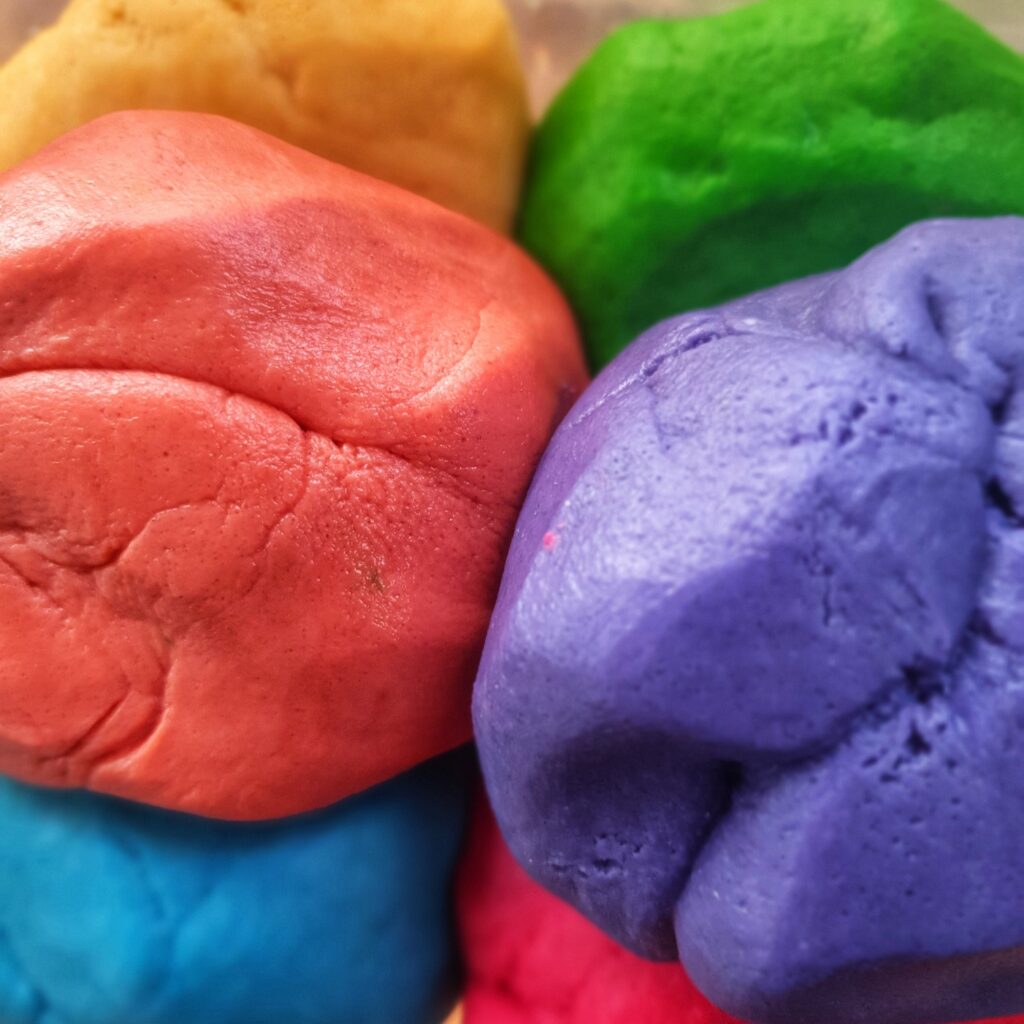Tactile activities are great for kids because they help them develop a sense of body awareness, motor skills, and cognitive development. In addition, these activities also enhance creativity.
Children have different tastes and needs, so whilst some of the kids will have fun with LEGO Creator Expert sets and the like, others will prefer playing in nature. Regardless of these differences, if you want your child to develop better sensory awareness and motor skills, tactile activities are a great option. Here are some ideas you can try at home:
Play Dough
Play dough is a great tactile activity to engage children with their hands. It’s easy to make and easy on the budget, too. Additionally, it’s very portable and easy to store (just keep it in a plastic bag). Children can use play dough at home or day care as an outlet for their creativity and get some good sensory stimulation in the process.
As play dough is so versatile, there are endless ways for kids to play with it! One of these activities is making fun shapes out of their fingers dipped into the doughy substance. They can make animals, people, or anything else they can think of.

Things don’t stop there: little ones can also try rolling the dough into snakes or balls, which they can throw around like bouncy balls. They can also try using cookie cutters on different colours of play dough, or put little pieces into muffin tins so they bake into little ‘cookies’ after baking them in the oven.
These are just some of the many ways children could use play dough creatively at home.
Create And Decorate Personal Storybooks
Sometimes, it isn’t enough to just read stories to them. You can recreate their favourite stories with them by creating a personal story book together.
Start by choosing their favourite story and writing it down on paper. Then, cut out pictures from magazines that illustrate the story and glue them into the book, along with any other decorations you might want to include, like glitter. When everything is finished, help your child decorate their own storybooks by gluing things, like stickers or crayons, onto them.
If your child has autism or sensory issues, making them comfortable while they work may be essential to success when creating a personal storybook with them. You might try using colourful papers instead of white ones so they can see better where they’re putting their glue better. Putting some music on in the background, as well as providing materials like pencils instead of crayons because they’re less messy and easier for smaller hands, can also help.
Once the book has been created and decorated, present it proudly at home. Put it up on a shelf so everyone can see how lovely it looks now that its pages are filled with memories you made together.
Finger-painting
Finger-painting is a classic activity that helps children explore colours and designs using their hands. Add plastic beads and small objects to make this activity more exciting for them! Varying the supplies can help you generate endless painting projects for kids. Give each child a tray of paint in one colour, plus some objects like spoons and cups. Have the kids dip the objects into the paint, then use them to create pictures on paper or an easel pad.
Sandbox
Digging and playing in the sand are great activities for boosting tactility. Add some water or paint to the sand to change up the experience of playing in it.
- Sand is a great sensory material.
- Sand play is an excellent way to develop motor skills and hand strength.
- Sand provides lots of opportunities for cognitive development and creativity, as kids can make castles, mountains, or even sculptures out of the sand.
- Sand is also beneficial for children with sensory processing disorders (SPDs).
Set Up A Making Station
A making station is a place that encourages children to experiment and explore with their hands. All you need are some craft supplies, such as pipe cleaners, paper plates, and stickers. You can also add other items, like buttons or beads.
A making station is a great way for kids to develop fine motor skills by exploring the materials on the table before them without pressure. It’s also ideal for sensory integration because it allows your child to get comfortable with different textures and surfaces, while letting them be creative at their own pace without any distractions.
Set up your table by placing different craft supplies in separate piles around the room so children have access to all of them as they move around freely (or use trays).
Conclusion
There are so many great tactile activities that you can do with your child. Hopefully, this list has helped you discover new ideas for fun, creative ways to stimulate their senses.



2 comments
Great ideas for summer hols
Imagine a space where love is in the air and every element is carefully designed to create an enchanting atmosphere. Private event spaces NYC are the canvas on which romance blossoms, an environment that evokes intimacy, passion, and the promise of shared moments that will be cherished forever.